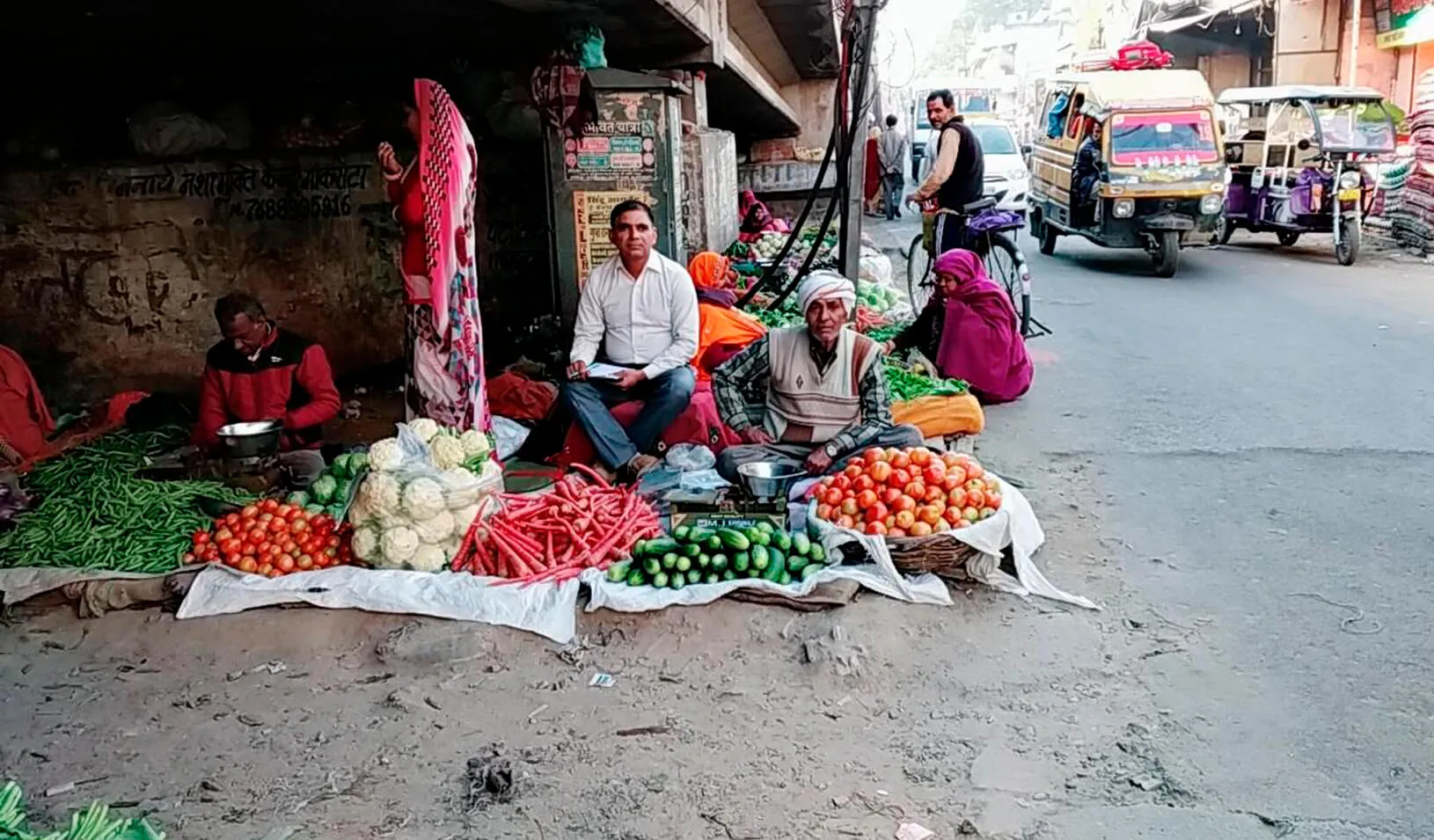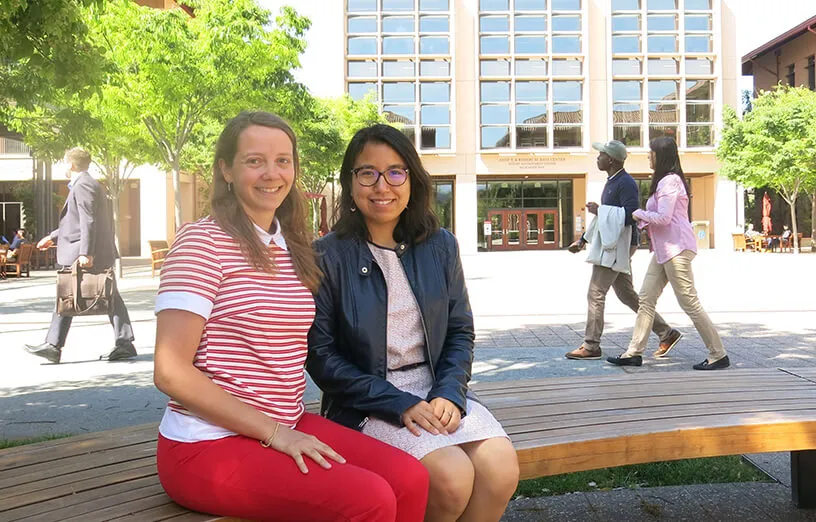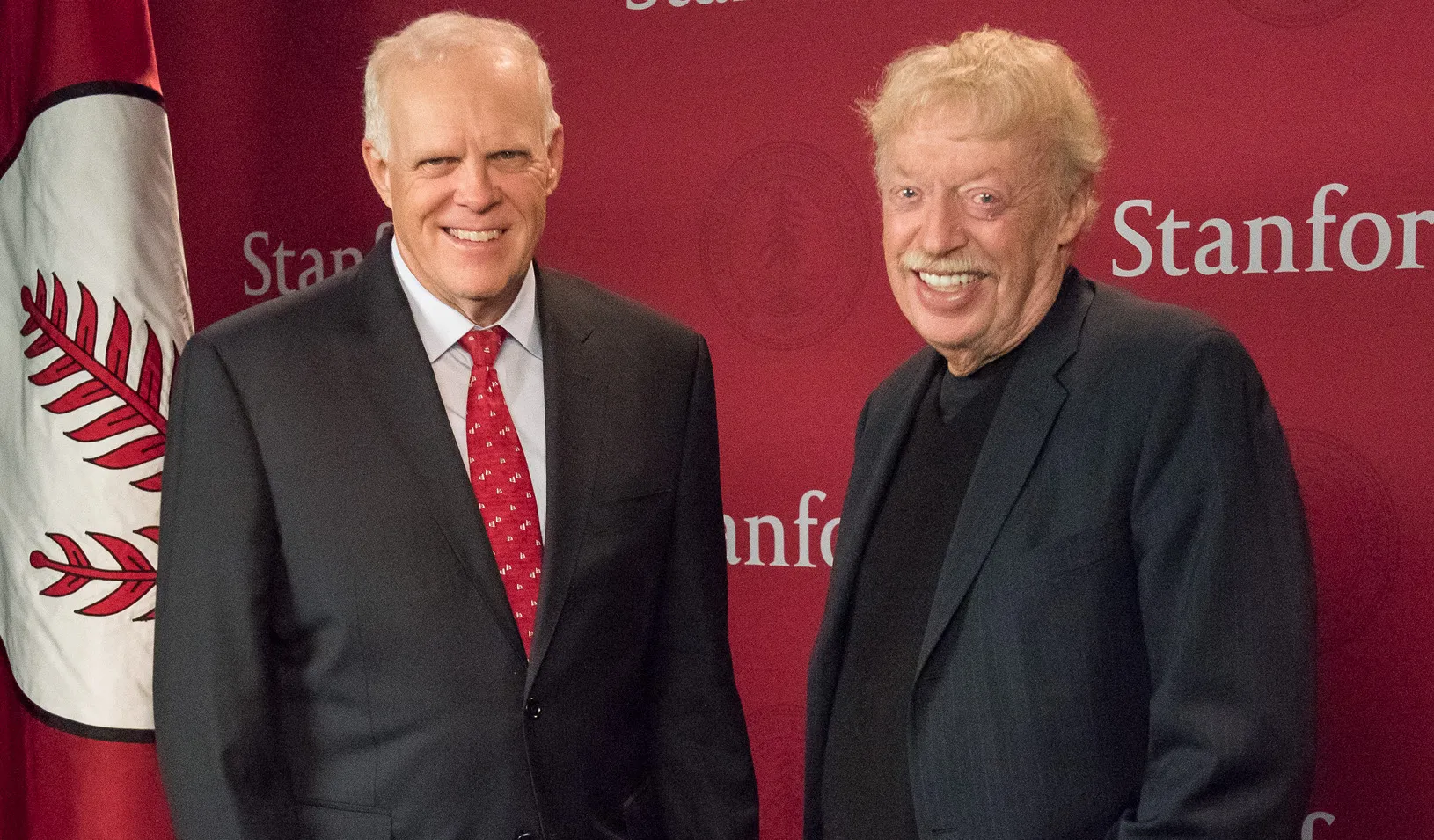When Field Research Goes Awry
Two PhD students find that opening a shop in India to study a simple problem was anything but simple.
May 29, 2019
A vendor sells fresh produce at one of the research team’s shops as a surveyor records details of all transactions. | Shashank Sreedharan
Predawn supply runs. Rogue goats. Dengue fever.
Not typical workplace challenges, but when you’re a PhD student conducting field research, nothing runs typical.
“It felt like we were putting out fires all the time,” says Odyssia Ng, one of two Stanford researchers who recently ran an experiment in Jaipur, India, designed to measure gender bias among entrepreneurs. “Some days were great, but a lot of days were not great. There were a lot of bumps.”
Across disciplines, researchers often head out into the field to collect data to better understand the world. In recent years, Stanford Graduate School of Business scholars have studied entrepreneurship in sub-Saharan Africa, craftsmanship in India, and leadership and decision making in Sierra Leone.
But such research includes numerous potential fail points. Language barriers, cultural misunderstandings, funding shortfalls, politics, and even lack of understanding or suspicion from locals can bring a quick end to the work.
Ng, a PhD candidate at Stanford Department of Economics, and Solène M. Delecourt, a PhD candidate at Stanford GSB, wanted to understand why female entrepreneurs make less money than their male counterparts, specifically in India. They saw several possible hypotheses: Was it the hours they worked? The industries they pursued? Or were shoppers less likely to buy from women than men?
For Solène Delecourt (left) and Odyssia Ng, a simple question turned into a complicated and exciting research project | Tricia Seibold
They came up with what they thought was a fairly simple experiment to test buyer bias: Set up a small retail business — a vegetable stand in a bustling market — and control for every factor except the gender of the seller. The sellers would offer the same products at the same prices, in the same locations, during the same hours, and even be coached to say similar things to customers.
“If you control everything about the business and the seller, you can look at how buyers behave,” says Delecourt.
As it turned out, the experiment was anything but simple.
On the Ground
Working with a small budget, Delecourt and Ng began with a test version of their idea. They enlisted a local research firm to hire a team to scout markets, set up their shop, and survey and collect data. From the start, they faced language barriers and a wide range of worker skill levels. “We had to hire people, then manage them, and it turns out also fire some of them,” Delecourt remembers.
Their main field researcher was the only employee fluent in both English and Hindi. But their tight budget meant they could hire her for only a few hours a week, meaning a lot of communication with the team required cell phone calls to remote translators.
The language barrier proved particularly difficult when renting shop locations. They identified a viable market in Jaipur but couldn’t figure out how to rent a stall. “We tried to find new vendors to ask them how they set up,” Ng says. “I think we went through the whole market, 200 vendors.”
It took more than a month of bad advice and poorly translated conversations before they learned how to secure a stall.
Once they had a retail space, they needed to stock it. But the wholesale market closed at 6 a.m., so they had to hire someone to buy their stall’s fresh okra and tomatoes in the middle of the night. They also mistakenly overbought the first few days. That meant finding rats and goats in their stall some mornings, munching on the leftovers.
“There were issues the first time we ran the market, but overall, we learned a lot about how to run it and collect the data we needed,” Ng says.
![]()
Going Big
Pilot completed, Ng and Delecourt returned home and generated enough interest in their preliminary results to persuade funders to grant them more dollars. The tension from a tight budget and a short time window relieved, they looked forward to reopening their shop and expanding the experiment. They assumed the money would solve most of their earlier issues.
Except: “The market shut down. We didn’t have a market anymore,” Delecourt says.
Back to scratch, using word-of-mouth to hunt down other pop-up, unregistered markets. That caused a two-month delay.
Next came a series of medical emergencies. Ng needed emergency surgery while in India, Delecourt had appendicitis, and their research assistant was in a car accident and broke both hands. The study was put on pause again, this time for four months.
Then, as Ng was celebrating a family member’s wedding in Singapore, she felt fevered and noticed a pain behind her eyes. Diagnosis? Dengue fever. Sidelined, again.
“I thought, ‘This is cursed,’” admits Ng.
Lessons Learned
Despite all the delays, “we made it through somehow and preserved the quality of the work,” Ng says. In total, they conducted a listing survey with 1,112 sellers, surveyed 237 in person, and recruited 282 sellers to work in three different markets. “I still felt we had good data, the markets were going well, the stalls were great, and the surveyors were fantastic.”
The unpredictability of field research will always be a challenge, and Ng and Delecourt offer a few pieces of advice from their experience.
First, track your expenses closely, and be sure to build in a margin. “There are always unexpected expenses that even the partner organization may not be able to predict,” Ng says. “Hopefully they’re not as extreme as getting surgery.” Second, expect every step to take more time than you plan for, and be flexible. “Because we were so used to all these unexpected things, we quickly had a Plan B, a Plan C, and a Plan D,” Ng says.
Finally, take risks and be ambitious. “Have a vision that is bigger than your resources,” advises Delecourt. “We knew we didn’t have the funding to do a full-blown experiment that first summer, but we wanted to have some version of an experiment. We got a lot more funding because we had something to show.”
Future Forward
Delecourt and Ng are still analyzing the data they collected from their market experiment, but early results are showing no differences in profits if women are given the same business opportunities as men.
The researchers plan to submit their full findings for publication this fall, when both will be on the academic job market. And they hope to spend more time focusing on entrepreneurship in India — they are currently writing up a proposal for a new grant.
“I feel like, overall, yes, we had ups and downs, and some very big downs but also very big ups,” Delecourt says. “But even at the worst point, this is something we really cared about. This is a project we want to know the answers to, and we want the world to know.”
— Shana Lynch
For media inquiries, visit the Newsroom.
Explore More
Phil Knight Honored with Uncommon Citizen Award

Catherine Roberts Joins Stanford GSB as CCMO

Alyssa Rapp, MBA ’05: What Matters to Me Now and Why
